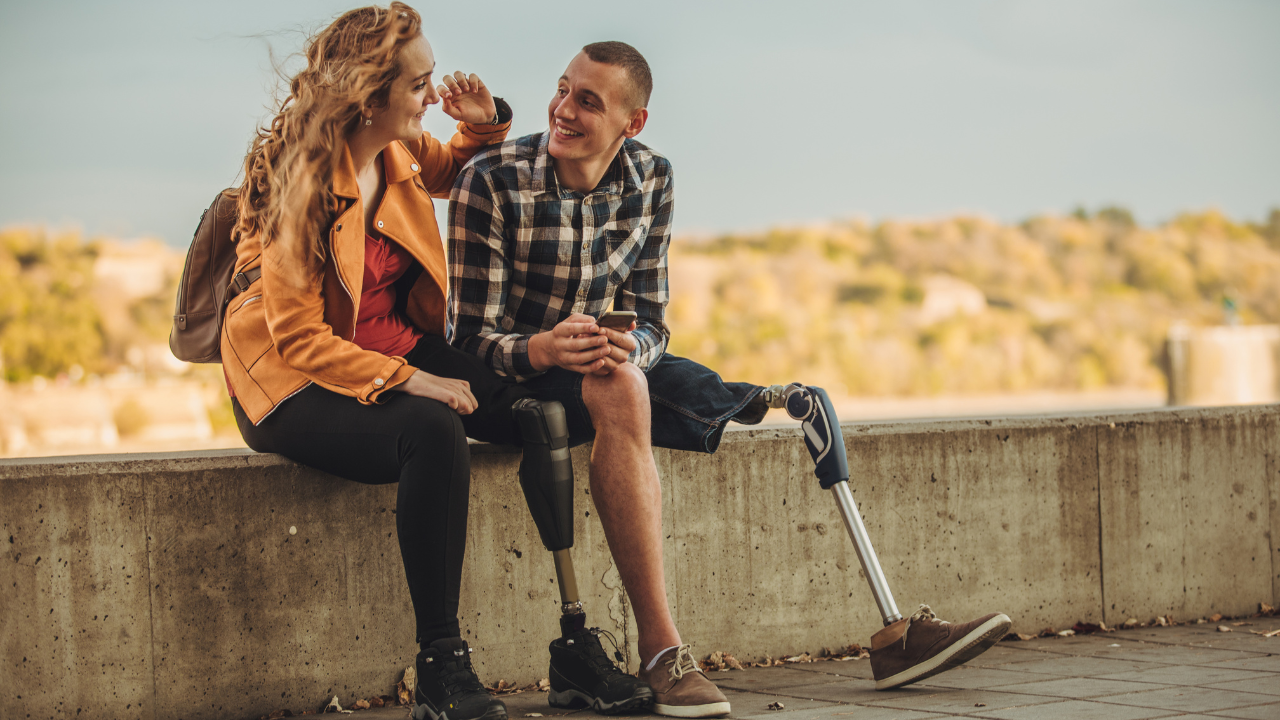Visibility is a shared experience
Jul 08, 2025
So far in our series on visibility and the nervous system, we’ve explored the internal world of visibility - how the nervous system responds, how to soothe it with rhythm, and how overstimulation can derail our ability to be seen with clarity.
Now it’s time to turn outward.
Because visibility isn’t just about your voice or your story. It’s also about who’s with you when you speak.
It’s about the friend who grounds you before you go live.
The coach who holds space when you feel exposed.
The gentle group in which you first try sharing what’s really on your heart.
Visibility is relational.
And so is healing.
We often think of visibility as an individual act - I need to show up, I need to speak, I need to post. But the nervous system tells a different story.
Our bodies are wired for connection. For safety. For co-regulation.

This means that visibility isn’t just about courage or strategy. It’s also about relationship. With ourselves, yes. But also with the people around us; those who witness, hold, and reflect us as we step into greater self-expression.
In polyvagal theory1, this is called the social engagement system. It’s the part of the nervous system that reads safety cues from facial expressions, tone of voice, and eye contact. And it’s profoundly impacted by the quality of our relationships.
This, incidentally, explains why showing up online feels so vulnerable. We’re wired to read facial expressions, hear tone, and respond to subtle body language cues. But when we post online - especially to strangers or a large audience - those relational signals vanish. There are no eyes to meet. No soft nods. No shared breath.
And yet, our nervous system keeps scanning, still trying to locate cues that aren’t there. No wonder it feels dangerous.
When we feel safe with others, our voices become steadier. Our ideas come out more clearly. We’re more likely to recover quickly from a misstep, more open to experimenting, and more willing to take up space.
What does this mean for your visibility practice?
It means you don’t have to do it alone.
Visibility is a social nervous system practice
If your heart races every time you hit ‘publish,’ you’re not broken or unprofessional. You’re human. And like all humans, your nervous system is scanning for safety cues: Is it okay to share this? Will I be shamed, misunderstood, or attacked?
This is why co-regulation matters so deeply.
Whether it’s texting a trusted friend before going live, sitting with someone who sees and believes in you, or working with a nervous system-informed coach who understands the terrain, these moments of connection tell your system: you’re not alone in this. And that message makes a huge difference.
Over time, these small but consistent practices help rewire your body’s response to visibility. Instead of bracing for impact, you begin to feel held. Instead of shrinking, you start to expand.

You see this all the time with teenagers. They’re constantly watching one another - assessing what’s safe to say, wear, or even enjoy. Adults often dismiss this as peer pressure or conformity. But through the lens of Polyvagal Theory, we might understand it differently. Developmental research2 shows that adolescence is a time of heightened social sensitivity, when the nervous system is deeply attuned to cues of acceptance or rejection. Rather than simply ‘doing what their friends are doing,’ teenagers are engaging in sophisticated, real-time nervous system regulation - trying to stay safe through connection and belonging.
You see a similar dynamic in identity groupings. Once someone aligns themselves with a particular community, whether it’s based on politics, profession, spirituality, gender, or lifestyle, they often begin to adjust how they present in the world. The way they speak shifts. Their fashion choices change. They might start spending time in different spaces, reading different books, even altering their tone, posture, or pace of speech.
While this is sometimes dismissed as ‘groupthink’ or performative, it can also be understood as a nervous system strategy. When we signal shared values and mirror group norms, we’re often seeking safety through resonance. We’re saying, “I belong here - please don’t cast me out.”
Side note:
If you’ve ever watched a loved one disappear down an internet rabbit hole, join a cult-like group, or adopt a rigid ideological stance, it can be confronting and painful. But it’s worth remembering that what you’re witnessing - this attachment to a set of beliefs, behaviours, or ways of showing up - is, at least in part, a nervous system response. Beneath the surface is often a deep longing to belong. To feel safe. To find certainty and connection in an uncertain world.
Polyvagal Theory helps us see that this kind of mirroring isn’t just about conformity - it’s co-regulation in action. Our systems settle when we feel seen and reflected. And visibility, in this context, becomes less about being radically individual and more about feeling safe enough to express yourself within a collective.

Relational practices that support safe visibility
Here are a few ways to bring co-regulation and relational safety into your visibility journey:
-
Micro-visibility in safe spaces: Practice sharing your voice in environments where you feel held. Speak up amongst close friends, in small group circles, or private communities, before you speak to a wider audience.
-
Co-regulate before going live: Talk to someone you trust, do a warm eye-contact practice with them, or simply hear a calming voice right before you show up online.
-
Choose relational containers wisely: Look for visibility coaches or communities that are trauma-informed, nervous-system aware, and attuned to the emotional dimensions of expression. These spaces help you go further, safely.
-
Use polyvagal cues: Soft eye contact (even with yourself in the mirror), gentle facial expressions, and warm vocal tones are all subtle ways to cue your system that it’s okay to be here, now, and visible.
You don’t have to heal alone to be seen
One of the mistakes I made in the early days of my business was believing I had to be fully healed before I could be fully visible. Fortunately, even as my mind clung to that idea, my intuition was guiding me toward connection. I joined courses. I met other entrepreneurs and small business owners online and in person.
Whether I realised it or not, I was following a deep instinct: to learn and to heal in relationship. Collectively. With others.
Western philosophy teaches us to believe we must do everything alone, including healing. But the truth is, healing also happens together.
Let your visibility be part of that healing.
Let it be paced. Let it be relational. Let it be supported.
Let your nervous system learn, over time, that it’s safe to be seen. Especially when you’re seen together.
Relational visibility in practice
If you're ready to explore your own visibility in a more supported, embodied, and relational way, I’d love to invite you to join us in the next round of The Visibility Studio.
We’ll be developing visibility practices together - pacing with the nervous system, honouring your voice, and exploring the many ways we can be seen without burning out or betraying ourselves.
It’s a space for experimentation, reflection, and steady expansion. A place to practise safe visibility in community.
You don’t have to do it alone.
Come be visible, together.

DISCLAIMER: This article explores the nervous system in the context of visibility and personal development. They are informed by somatic and trauma-aware perspectives, but they do not constitute medical advice. If you’re experiencing persistent nervous system symptoms or concerns about your physical or mental health, please seek guidance from a qualified healthcare provider.
Polyvagal Theory, developed by Dr Stephen Porges in 1995, proposes that our autonomic nervous system is structured hierarchically and plays a central role in how we experience safety, connection, and threat. It introduces the idea that social engagement behaviours - like eye contact, vocal tone, and facial expression - can calm the nervous system by activating the central vagal pathway, supporting regulation and relational safety.
This has been particularly helpful in trauma therapy and somatic practices, offering a physiological lens to understand emotional responses and develop regulation strategies. However, the theory remains controversial in scientific circles. Critics question the anatomical distinctions it draws, challenge its evolutionary claims, and argue that it lacks sufficient empirical validation. While its clinical utility is widely acknowledged, further research is needed to test and refine its core mechanisms.
Blakemore, S.-J., & Mills, K. L. (2014). Is Adolescence a Sensitive Period for Sociocultural Processing? Annual Review of Psychology, 65, 187–207.





